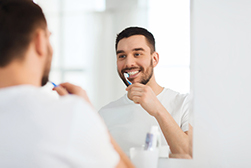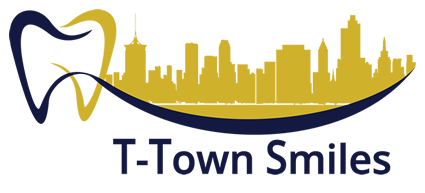 Although brushing your teeth is something you do everyday, that doesn’t mean that you’re doing it properly. No one is immune to slacking on tasks that they do repeatedly, and brushing your teeth is no exception. Whether you’re using a toothbrush that’s actually hurting your teeth and gums, or you’re simply not brushing thoroughly, you don’t want your oral health to suffer unnecessarily when you may just need to revisit your brushing technique.
Although brushing your teeth is something you do everyday, that doesn’t mean that you’re doing it properly. No one is immune to slacking on tasks that they do repeatedly, and brushing your teeth is no exception. Whether you’re using a toothbrush that’s actually hurting your teeth and gums, or you’re simply not brushing thoroughly, you don’t want your oral health to suffer unnecessarily when you may just need to revisit your brushing technique.
How Do I Know If I’m Brushing Properly?
During regular dental exams, there are indicators that can alert your dentist that you may not be brushing properly. However, signs of poor brushing can be similar to other oral health conditions that are not so easily corrected. Some signs that we may notice include swollen gums or gums that bleed when the dentist pokes them or excessive calculus on your teeth.
However, there is no definitive sign that your dentist can look for to determine if you need to improve your brushing technique. That’s why it never hurts to find ways to improve your oral hygiene habits, from switching out your toothbrush to changing the angle that you hold it.
How Can I Improve My Brushing Technique?
The first step in improving your brushing habits is to not rush through the process. This may be the root of the problem and can be easily corrected. Take a full two minutes to brush your teeth and floss every time you brush. Next, make sure that your toothbrush head isn’t too big for your mouth, which can cause damage to your gums and affect how thoroughly you can brush, and soft bristles are more effective at cleaning your teeth than firm ones. Brush gently and slowly and rinse with a fluoridated mouthwash or a saltwater rinse.
We are here to make sure that you know how to take care of your oral health and prevent future problems. For more information about your brushing technique and how to improve it, contact our office for a consultation.
